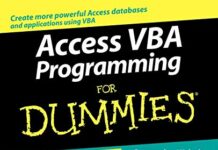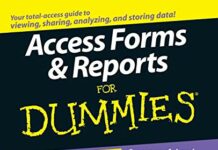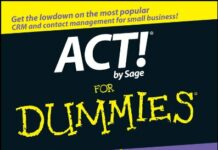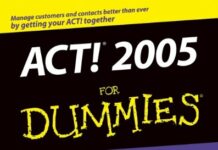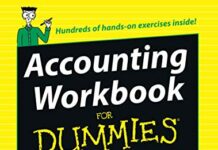
Ebook Info
- Published: 2011
- Number of pages: 491 pages
- Format: PDF
- File Size: 11.75 MB
- Authors: Aaron Hillegass
Description
The best-selling introduction to Cocoa, once again updated to cover the latest Mac programming technologies, and still enthusiastically recommended by experienced Mac OS X developers.Cocoa® Programming for Mac® OS X is considered by most to be the de-facto intro-to-OS X programming text.Bob Rudis, the Apple BlogI would highly recommend this title to anyone interested in Mac development. Even if you own the previous edition, I think youll find the new and revised content well worth the price.Bob McCune, bobmccune.comIf youre developing applications for Mac OS X, Cocoa® Programming for Mac® OS X, Fourth Edition,is the book youve been waiting to get your hands on. If youre new to the Mac environment, its probably the book youve been told to read first.Covering the bulk of what you need to know to develop full-featured applications for OS X, written in an engaging tutorial style, and thoroughly class-tested to assure clarity and accuracy, it is an invaluable resource for any Mac programmer. Specifically, Aaron Hillegass and Adam Preble introduce the two most commonly used Mac developer tools: Xcode and Instruments. They also cover the Objective-C language and the major design patterns of Cocoa. Aaron and Adam illustrate their explanations with exemplary code, written in the idioms of the Cocoa community, to show you how Mac programs should be written. After reading this book, you will know enough to understand and utilize Apples online documentation for your own unique needs. And you will know enough to write your own stylish code.Updated for Mac OS X 10.6 and 10.7, this fourth edition includes coverage of Xcode 4, blocks, view-based table views, Apples new approach to memory management (Automatic Reference Counting), and the Mac App Store. This edition adds a new chapter on concurrency and expands coverage of Core Animation. The book now devotes a full chapter to the basics of iOS development.
User’s Reviews
Editorial Reviews: About the Author Aaron Hillegass, who worked at NeXT and Apple, now teaches popular Cocoa programming classes at Big Nerd Ranch. At NeXT, he wrote the first course on OpenStep, the predecessor to todays Cocoa tools. This book is based on the big Nerd Ranch course and is influenced by more than a decade of work with OpenStep and Cocoa.Adam Preble learned Cocoa programming from the first edition of this book. After too many years of professional C/C++ development, today Adam writes Mac and iOS applications at Big Nerd Ranch, where he is also a Cocoa instructor. He is frequently filling in the gaps between work and family time with pinball machine software development and countless other projects.
Reviews from Amazon users which were colected at the time this book was published on the website:
⭐I bought this to refresh my memory and replace my 1st Edition (that I read so many years ago) with a Kindle version. Unfortunately, the book is now woefully out-of-date with a publishing date of 2011. Also, with three updates already in its past, the book now suffers from errata and both writing and coding styles that differ from the older material to the new. The latter (or updated) chapters are just kinda sloppy.As others have mentioned, its pretty easy to grok and recover from the typos and skipped instructions if you’re already experienced in Obj-C and Cocoa programming, but I’m not so sure that would be true for anyone that’s trying to use this as a starter book…which is what it’s supposed to be. This used to be the “go-to” book for the first-time OSX programmer; I wouldn’t recommend this until it undergoes a serious rewrite.For anyone struggling with the deprecated OpenGL glut methods in Chapter 35…set your Deployment Target to 10.8.
⭐I have a number of the Big Nerd Ranch books. I really liked the 5th edition of this book (and the one you should get if you are new to OS X programming). I needed to re-work some Objective-C code and got this book as a refresher. On first glance this books looks as good as the other BNR books. I will update this review as I get further into the book.However, IF YOU ARE THINKING ABOUT KINDLE VERSION. DONT DO IT.The Kindle version of this book is virtually unusable. The images are simple awful (too small to be seen).Also, the code listings are done in a proportional font (same as the text) that makes reading the code very hard. The code listings are also not separated from the rest of the book at all.These two problems really take away from the utility of this book. Really expected more from the Big Nerd Guys.
⭐I’ve had this book on my ‘wish list’ since the 2nd edition when I first thought I should learn Cocoa, but what with one thing and another it wasn’t till the 4th ed that I’d worked my way through C, then Objective C 2.0 and felt I was ready to tackle Cocoa.Alas, this book didn’t live up to my expectations. It covers all the right topics, but the programming examples are not particularly useful and it’s not clear how one could extend them to other situations. Some concepts though covered are left under explained (like MVC and delegates). Key methods are thrown out list-like in places, with no obvious pointers to how or where they are to be implemented. In other cases, fancy tricks are pulled off by getting the reader to basically copy loads of code, but why or how those methods are being implemented is not really clear. If the author’s weren’t leading you by the hand, you’d have no idea how they came up with those solutions, and that really encapsulates the problems with the book as a whole: it demonstrates, but doesn’t empower.
⭐I bought this book even though I owned the second edition. I was tired of figuring out the workarounds since the old book uses an ancient version of Xcode. This one covers Xcode 4, so instead of getting stuck trying to find something in Interface Builder I can keep on going.My only complaint is the book is more of a tutorial/introduction than a reference. The authors present a subject and give a very quick demonstration. It’d be nice if they went over the other configuration options or showed on-screen examples. All stuff you can figure out your own by experimenting of course.Some things aren’t covered like the NSToolbar but I guess you can’t pack everything in one book. There is an OpenGL example which you won’t find in most other introductory Cocoa books though. Also, most chapters also have a couple challenges at the end which is nice.
⭐I very agree with Mr. Harrison’s comment. I bought this book as it’s recommended reading by number of sources, but now I’m quite disappointed. I expected comprehensive guide to Cocoa programming world, but got unsorted mixture of information about things I already know as an iOS developer (though I have to admit that some information about Objective-C internals were interesting and new to me, but it can be found elsewhere if someone is interested in it).However, I didn’t look for a book about everything, but one explicitly focused on specifics of programming using Cocoa environment on Mac OS X and this goal this book fulfills very purely or let’s say it offers just a shallow insight into it. Why in a book about Cocoa programming there are 11 pages talking about iOS programming and loads of stuff related to Objective-C internals instead of in-deep explanation of Cocoa system and its parts itself?Although it reflects some new stuff, like view-based table views, it ignores other important and most interesting aspects. Except others, auto layout system introduced in OS X Lion – the stuff every iOS/OS X developer I know is struggling with and would need some comprehensive guide how to master it.It really looks like rather random compilation of BNR lectures than book written with focus on its particular theme. More to that, with structure of chapters according to some nonsense logic – wondering here if it’s editor’s work or authors themselfs.As an iOS developer which started to develop for OS X and is looking for good and comprehensive learning material, I’m really disappointed. I didn’t learn anything new I couldn’t find in Apple’s documentation and guides, except some details (important ones must be said!).Conclusion: I didn’t get what I was looking for and definitely it doesn’t worth the sky-high price.
⭐Cocoa is not intuitive – at least I don’t think it is – it’s not the book’s fault if some ideas of the language don’t “click” first time. To compare, I used to be a hobbyist Visual Basic programmer and found VB far more intuitive.For the absolute beginner there are easier books / ebooks to try.Some of the exercises come over as a bit “magic” – not explaining in any detail how/why stuff works, or how to adapt it for other apps. Same is true of other books as well.Although the book is teaching Xcode 4.x it’s possible to get away with Xcode 5.x. Haven’t come across any fully deprecated code – i.e. that won’t compile at all – yet. A basic knowledge of Xcode 5.x is an advantage, however. Things like “Constraints” and “Localisation” are totally different in Xcode 5.x.
⭐Definitely recommend this, but I do wish the authors would consider writing a series of books on the same range of topics, with a lot more detail for each chapter. During the course of writing my first Mac App, I found myself needing to learn a number of the topics – Bindings, Pasteboards, etc… but actually found myself needing to scour the web due to the lack of real in-depth detail provided.
⭐Brilliant book, still works even though a couple of years old
⭐Regarding the Kindle version, I found it extremely disappointing that you have to actually TYPE IN the code examples. The DRM efficiently disables copying code fragments to Xcode or any other editor.While this is somewhat understandable from an author’s and distributer’s perspective, it is a No Go for the reader and user of that book.The book lives from the working code that it supplies TOGETHER with the theoretical background; having to hack in the code manually limits the usability of an electronic distribution format and shows the lack of imagination of current publishers with regard to “modern” distribution formats not based on dead trees.
⭐Als Programmierer mit langjährigem Background im Bereich C / C++ viel mir der Einstieg nicht schwer. Fühlte mich eher unterfordert.Für echte Einsteiger ist das Buch allerdings nicht geeignet, diese sollten sich wohl vorab etwas mit Objektive-C auseinander setzen.Ansonsten kann ich das Buch empfehlen um grundlegende Kenntnisse im Bereich Cocoa zu erlangen. Für alles weitere ist Apple’seigene Dokumentation für mich ab sofort ausreichend.
⭐Not found.
Keywords
Free Download Cocoa Programming for Mac OS X 4th Edition in PDF format
Cocoa Programming for Mac OS X 4th Edition PDF Free Download
Download Cocoa Programming for Mac OS X 4th Edition 2011 PDF Free
Cocoa Programming for Mac OS X 4th Edition 2011 PDF Free Download
Download Cocoa Programming for Mac OS X 4th Edition PDF
Free Download Ebook Cocoa Programming for Mac OS X 4th Edition
